[FYI: a podcast episode about this intervention will be released tomorrow. We wanted to talk through the varying aspects of the intervention and discuss some of the different nuances in the way that it is being utilized. It is our attempt to try to bring together a more cohesive practice of the intervention that serves the Restoration Therapy model. This is also the first time that I have written about this intervention, so please feel free to leave any questions, thoughts, ideas in the comment section below…as these things are often a long work in progress.]
I am not 100% sure of the origin story of this intervention, but my first really vivid recollection of it was from an individual therapy session around 2010.
I was feeling really stuck in a session with my client. She was struggling with a lot of anxiety, and in her anxiety she was talking about all the different things that she was anxious about. I myself was feeling a bit overwhelmed with the long list of stressors she was describing.
I didn’t know what to focus on in the session.
I wasn’t sure what to do. At that time I was in a very big office (it even had a ping pong table in it), and I had the intuition that I just needed to get up and utilize the space.
So I went over to my desk, grabbed a handful of colored 3x5 note cards and sat back down. I then said to the client, “Start telling me the things you are anxious about?”
[though it is called the notecard intervention/exercise, I sometimes will use sticky notes, or pieces of paper — whatever I have on hand. I am about to start using dry erase cards to reduce waste — there are lots of dry erase options].
And one by one she started listing each of the things she was anxious about. And one by one I wrote each of them, on separate note cards [these cards are a representation of that day and not the actual cards]
Step #1: Help client externalize their feelings/thoughts. Get the thoughts outside of themselves and onto something else.
And then I got up from my chair with the stack of 3x5 cards and I started laying them out on the floor of my office, spread out as far as my space would allow me. I remember this session and all the cards that we had — around 15. Though now, we recommend about 5-6 cards typically.
Then I asked my client to stand up and just start walking in and around all of the cards. “Simply notice” I said. And as she walked through the cards I began to ask her a serious of questions.
“What are you noticing about your anxiety?”
“Where do you feel it in your body as you walk through and look at the cards?”
“Are there any cards that seem more important, or more urgent right now than the others?”
“Are there any cards that seem like immediate action can be taken, while others there is nothing to be done right now?”
Step #2: Help the client simply notice their their feelings/thoughts as they come into contact with the things listed on each of the cards.
As my client made her way through the cards I wanted her to pay particular attention to where her energy, or focus was being drawn to.
After she spent some time walking through the cards and looking at them, I encouraged her to begin working her way through each card, one at a time.
And in working through the cards, she would pick it up, read it out loud, and talk it through with me. And as she read that card and talked it through out loud, I would then say to her “What do you want to do with that card? Do you want to put it to the side right now and focus on that later, or is that the card that needs your attention?”
And one by one she worked her way through each card, until she came to the final card. And as she picked up the card and started reading it, she said to me, “This is the one.”
[sometimes I put a hula hoop into the space, with the card in a middle — I find it to be a helpful spatial representation of the boundary where the client can practice immediate agency upon the topic on the card that they have selected — and I leave the other cards within view, but outside the space. Sometimes I leave one card in closer proximity to the hoop as the client identified it as not most important to today’s work in session, but something to keep focus on]
I don’t know if I was lucky with that first client I tried this intervention on, or if the reality is, people just have an intuitive sense of what is the most important thing they need to work on when they take an objective, externalized look at their issues (in this case, the things she was anxious about).
There were lots of things my client was anxious about on that day. But we were able to isolate the one thing that she identified as making her most anxious, and that she felt like she had the most agency to create change by taking immediate action.
I now like having clients sometimes step into the hoop with the thing they identify. But while in the hoop we write down their very next best step in the face of that particular issue — this might be where their truths begin to emerge and we place those in there as well.
Step 3: Client identifies the one card they want to focus on.
Often I find that when a client identifies the one card they feel very empowered. They’ve been able to exercise some agency in locating the one issue/source of anxiety/etc. that they want to focus on. And though this post is written about an intervention around anxiety, I use the notecard intervention for all kinds of things.
Step 4: Do the 4 Steps here, or Stop, Turn, Slow
We have found that once a client identifies the one thing they want to focus on, it is then helpful to move into the 4 steps, or Stop, Turn, Slow (in episode 5 of the RT Dialogue we discuss Stop, Turn, Slow — stay tuned for most posts on this topic). As part of this slow step you are helping the client take their next best step — what is an action that connects to their truth in this situation?
Lance Ahl in his dissertation, Arresting Anxiety: Experiential Training Model for Utilizing Intensive Restoration Therapy, writes the following:
Putting these elements together, Restoration Therapy created a technique called “Stop, Turn, Slow” that helps clients climb the ladder of safety and connection/ and get off the “anxiety highway” (T. Hargrave et al., 2022). When clients recognize anxiety coming on, they are taught to abruptly stop the process by first breathing with the physiological sigh and calming down the dorsal vagal nerve. Next, they address the autonomic nervous system by simply naming which part of the quadrant has been triggered, and then do an empowered turn away from those relentless cascading thoughts towards a truth that allows them to climb the ladder to the ventral vagus. Finally, we take the last step of slow, which contrasts with the frenetic anxiety and allows for clients to make empowered steps forward in their restored state. Clients are both given and trained in the “Stop, Turn, Slow” tool to help them find relief. Throughout an intensive, they will practice this intervention as they also learn the finer points of the Restoration Therapy model previously discussed. This intervention usually takes fifteen minutes to teach and can then be practiced until the therapists feel like the clients are comfortable with it.
Benefits of the Notecard Intervention
The note card exercise is an experiential intervention for therapists and clients that:
empowers a client to begin to clearly identify the specific issues at hand.
helps client externalize their feelings/thoughts/issues away from them to get an objective look at them — helps therapist get an objective look at them as well. Sometimes clients have commented “my issues look small laying on the floor”, often abandoning their concern for that issue immediately.
puts client into contact with their feelings/thoughts/issues as they walk through the cards.
helps clients recognize their anxiety trap (the source of their anxiety).
helps client sort through feelings/thoughts/issues as they pick each card up and talk through them — this specific action I have found to be very emotionally regulating for clients. Often clients walk through their 4 steps in this portion of the exercise — without even knowing it. Talk about calming and empowering.
empowers client to identify the specific item they want to tackle for that day.
helps client organize their own feelings/thoughts, as well as helping therapist organize and sequence the therapeutic session.
empowers client in helping them identify something they can take immediate action on.
gets therapist and client up and off the couch and into immediate practice.
These are just some of the things I think of as benefits to this notecard intervention, but I may be missing some, or a lot of things.
So please write in the comment section about other benefits you have identified, or other ways that you are using this exercise to create change. Though there are basic principles in the intervention, I am aware that we all execute things in different ways — so would love to hear about your own experiences so we can work together to build a more cohesive practice around the notecard intervention.
Origin Story and Personal Transformation
As I shared with you in the story above, I first remember doing this in session around 2010, though I think I tried it a few years before. It was at least percolating in my mind. Though not a direct connection, I credit a lot of the ideas around practicing in session (especially with anxiety) to the book, things might go terribly, horribly wrong: a guide to life liberated from anxiety by Kelly G. Wilson and Troy Dufrene. They have a lot of great things to say about coming into contact with your anxiety, especially by being curious about it and learning to befriend it.
I think I just thought that having clients write down their concerns onto note cards was a simple way of coming into contact with their struggles — positioning themselves curiously, and befriending it by the very act of walking through the cards. The note card exercise was spontaneously birthed out of my reading, along with my great anxiety of being really stuck in session with that client on that particular day. I am thankful that I had note cards at hand and a big office to roam around in.
Over the years I didn’t talk much about that notecard exercise, but when it came time to develop that anxiety intensive model and launch our two anxiety pilots, I figured this was a good experiential exercise to bring into the room with anxious clients. Having the clients write down the things that made them anxious onto notecards and then do the exercise as described above, brought really powerful change into the room and into their lives. And we tinkered with the process a lot in between pilots, into anxiety intensive trainings — and we are still tinkering to make it better.
The beautiful thing about the Restoration Therapy community is just that — it’s a community. I have been inspired by how others are using the notecard exercise in their own practices, and it encouraged me to use it more in my own work — as I often got away from it, and stuck in my own anxiety in sessions.
So this notecard exercise continues to be developed in this amazing community of therapists and it has evolved in so many ways that have helped therapists bring practice into their sessions, creating change in the lives of their clients.
In November of 2022 when I was at WinShape training therapists in the anxiety intensive model (Turning from Anxiety) along with Tanner Hargrove, and Terry and Sharon Hargrave, I pulled out this exercise to teach how to do it.
I carefully wrote down all the things in my life that I was wrestling with, and as I taught the group what I was doing, I slowly laid each card out. There were a lot that day — maybe 15 as well.
I walked in and among the cards, teaching, but also trying to be authentic in the moment — doing my own work — making the exercise real. And one by one I would pick up a card and talk it through. And decide if I should lay it aside, or bring full focus to it.
Eventually I came down to one card. On that card I had written simply, “my marriage”.
And as I began to talk through that card and then move into the 4 steps, I found myself getting emotional. So I quickly hurried along to finish the demonstration and move onto the next part of the teaching that day.
But wouldn’t you know it…Terry stood up in the back of the room and asked me to walk back up to the front. On that day he not only spoke truth into my life from the back of the room (literally speaking words of truth), but he asked me to say my truth again, but to say it like I mean it. To take an empowered position in my life.
And that notecard exercise that I was supposed to be only demonstrating on that day, turned into an experiential personal encounter with truth that changed my life and forever changed my marriage.







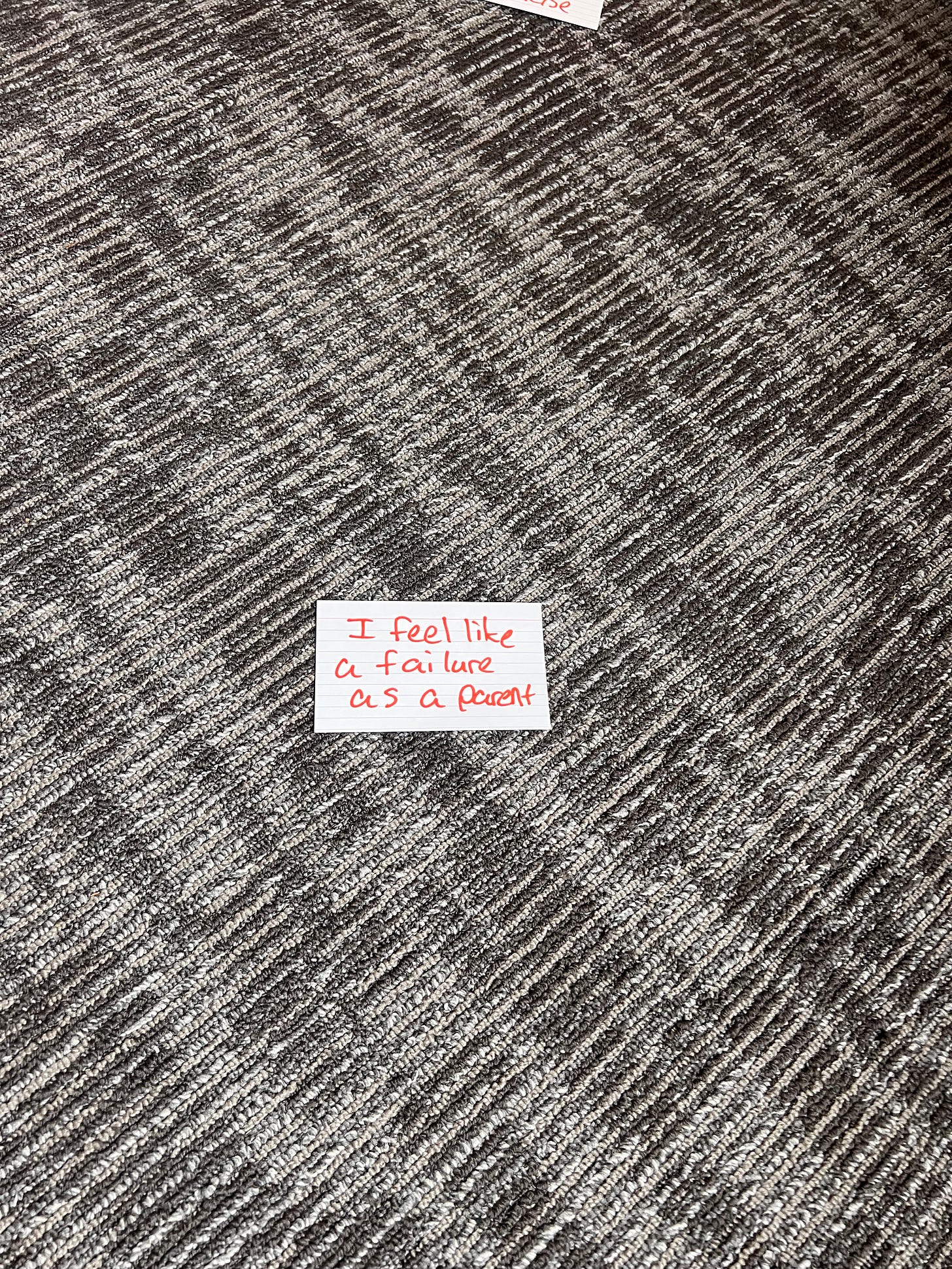

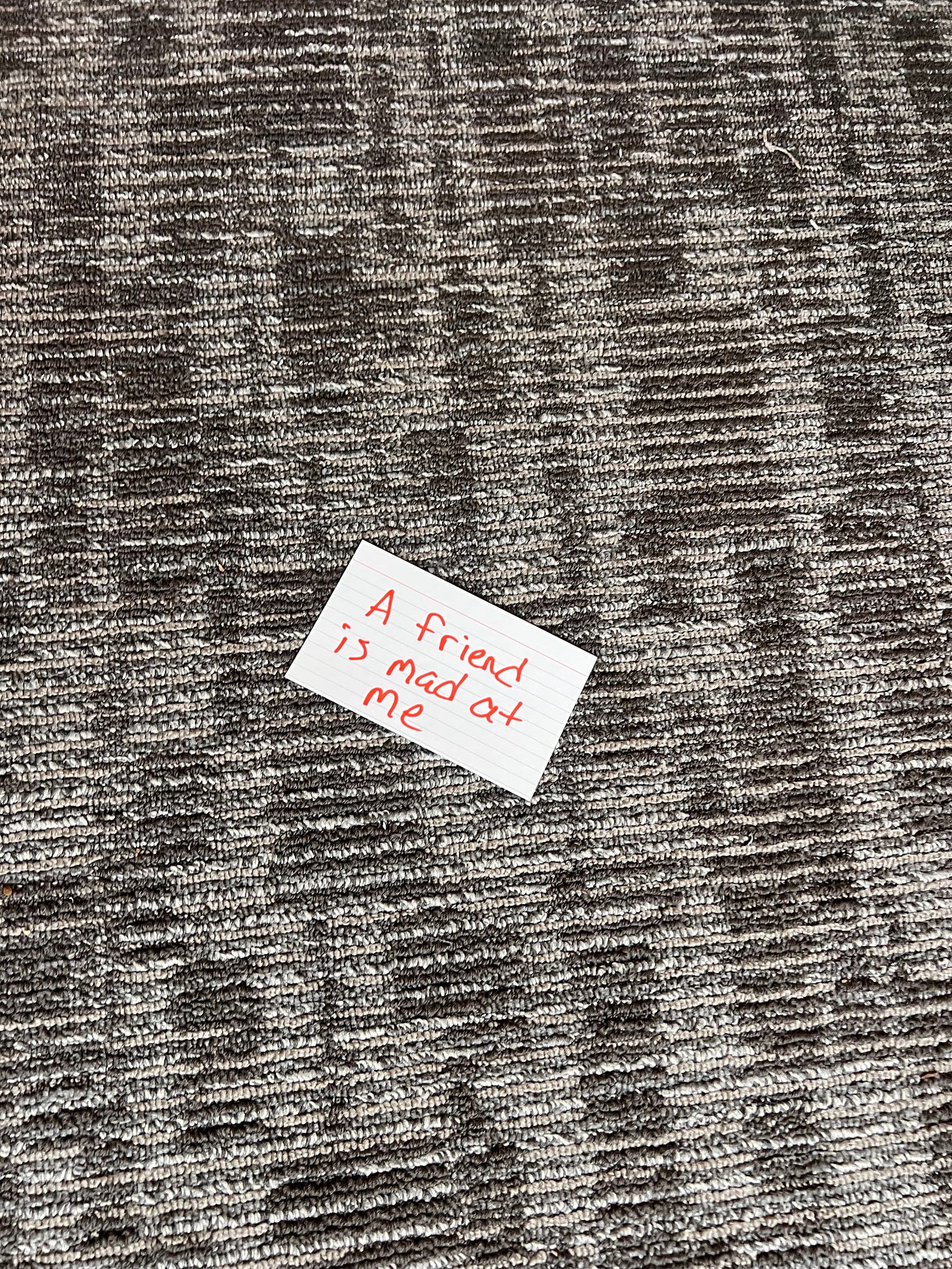

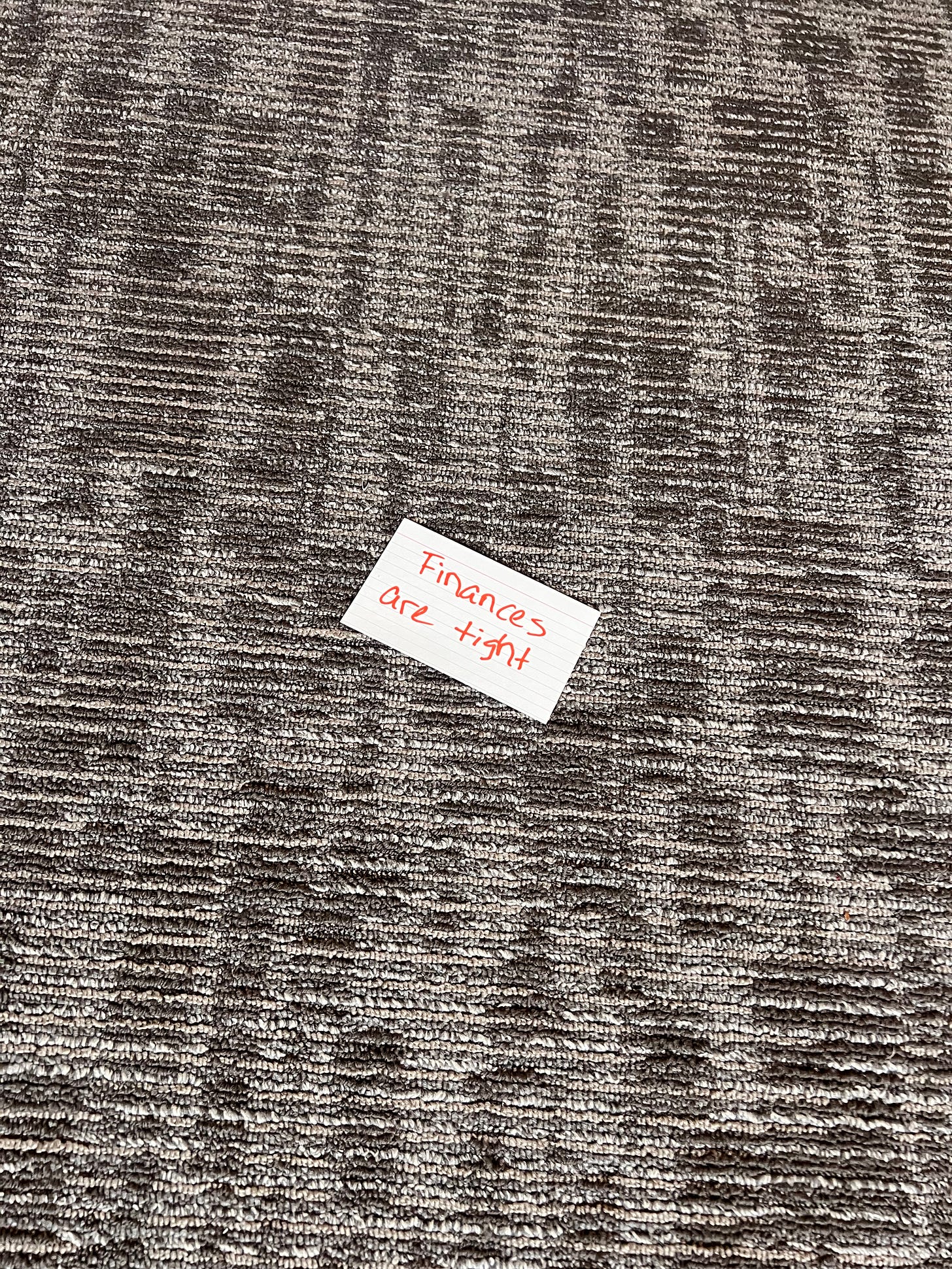

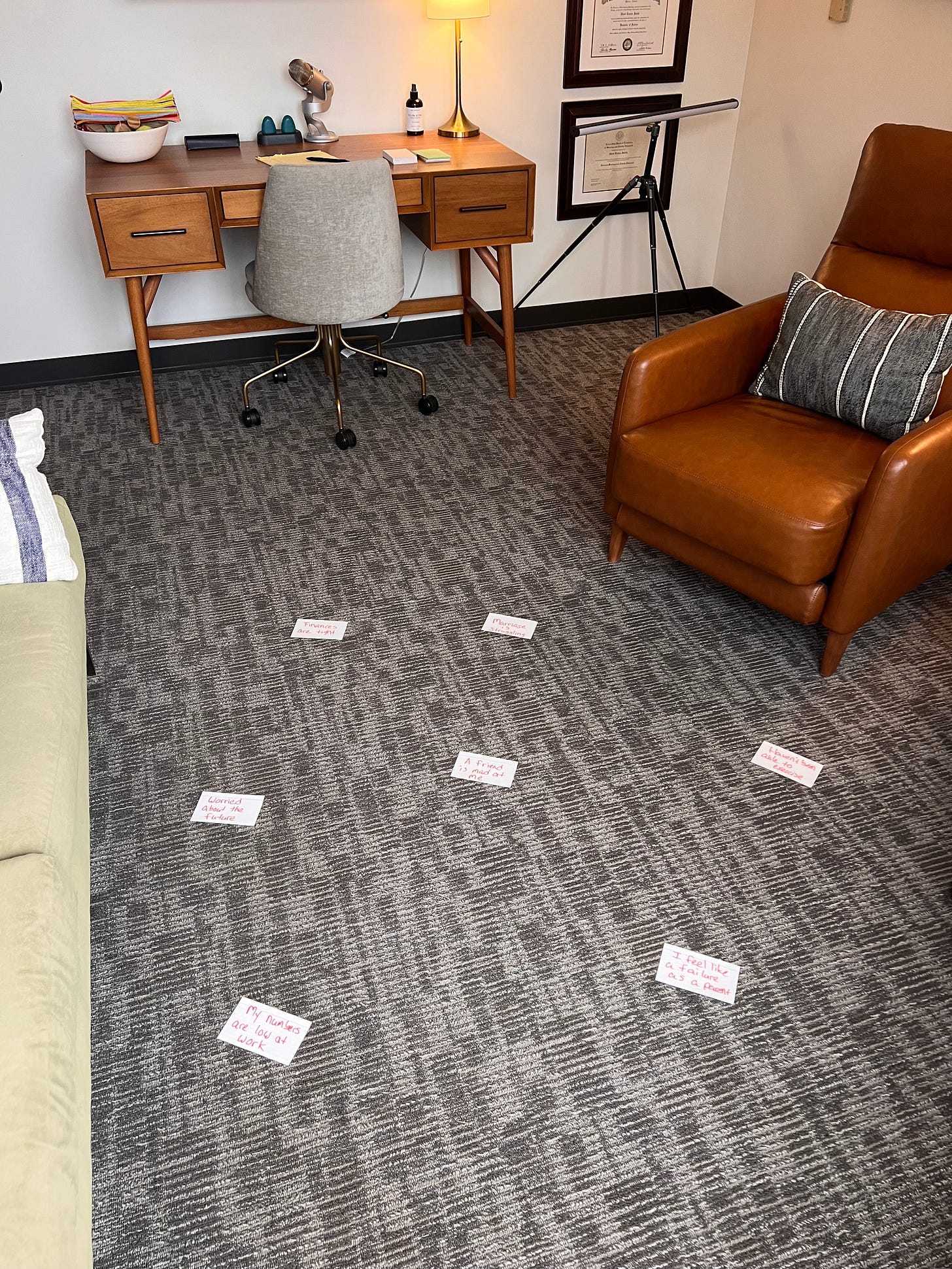
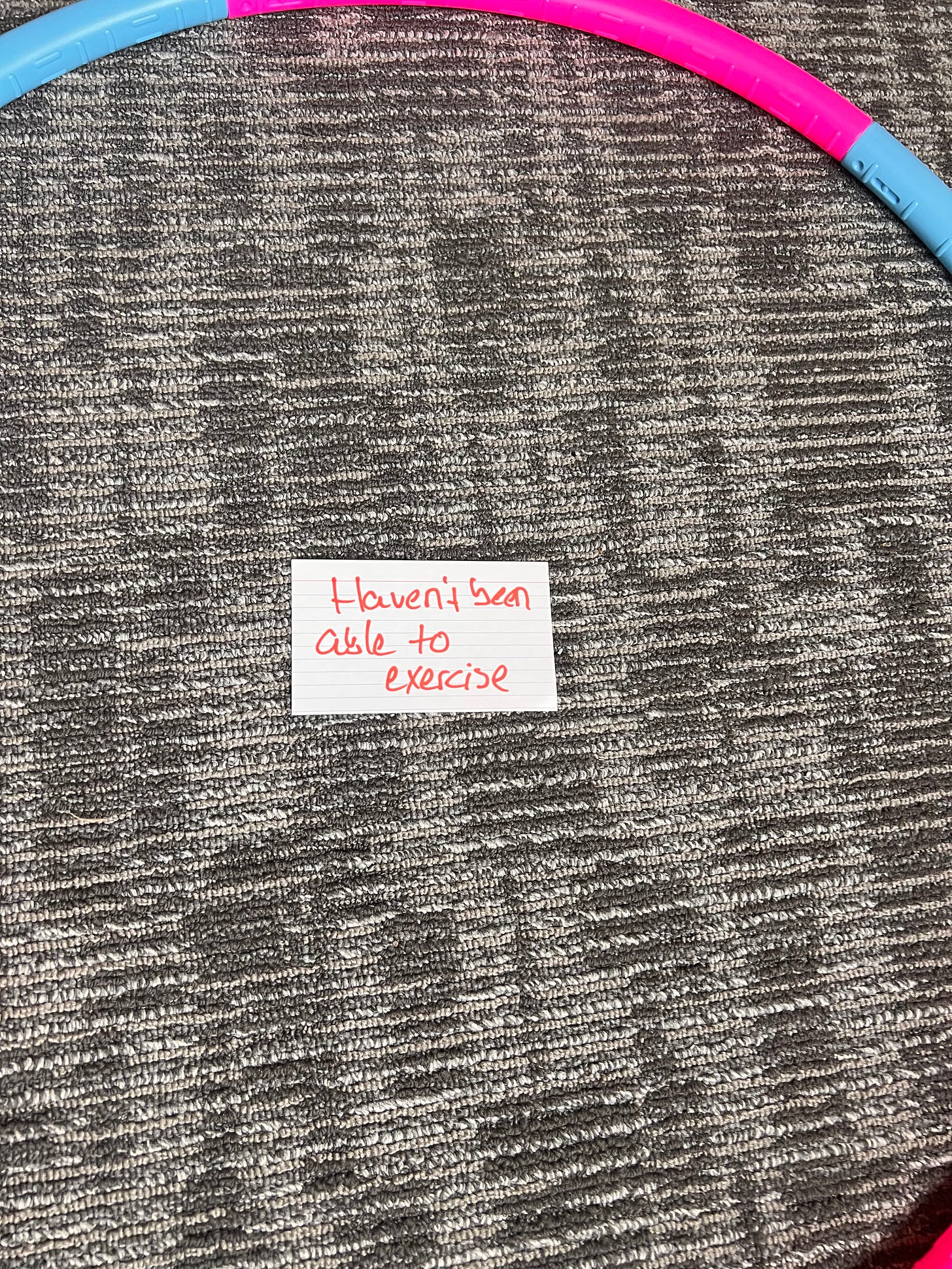

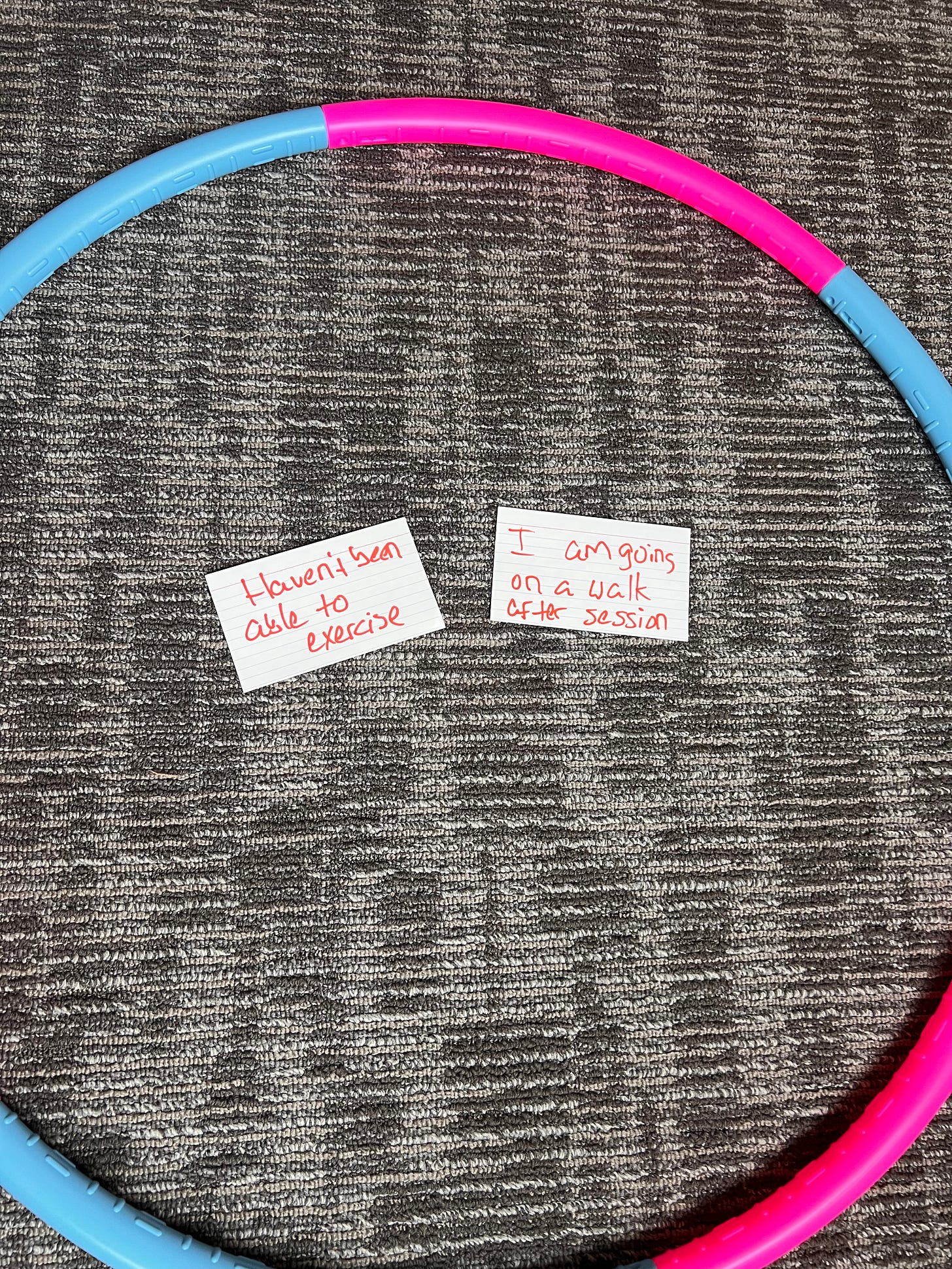
Rhett - thank you for sharing this intervention. I look forward to listening to the podcast and hearing more about it. Glad I have those sticky notepads in my room🙂